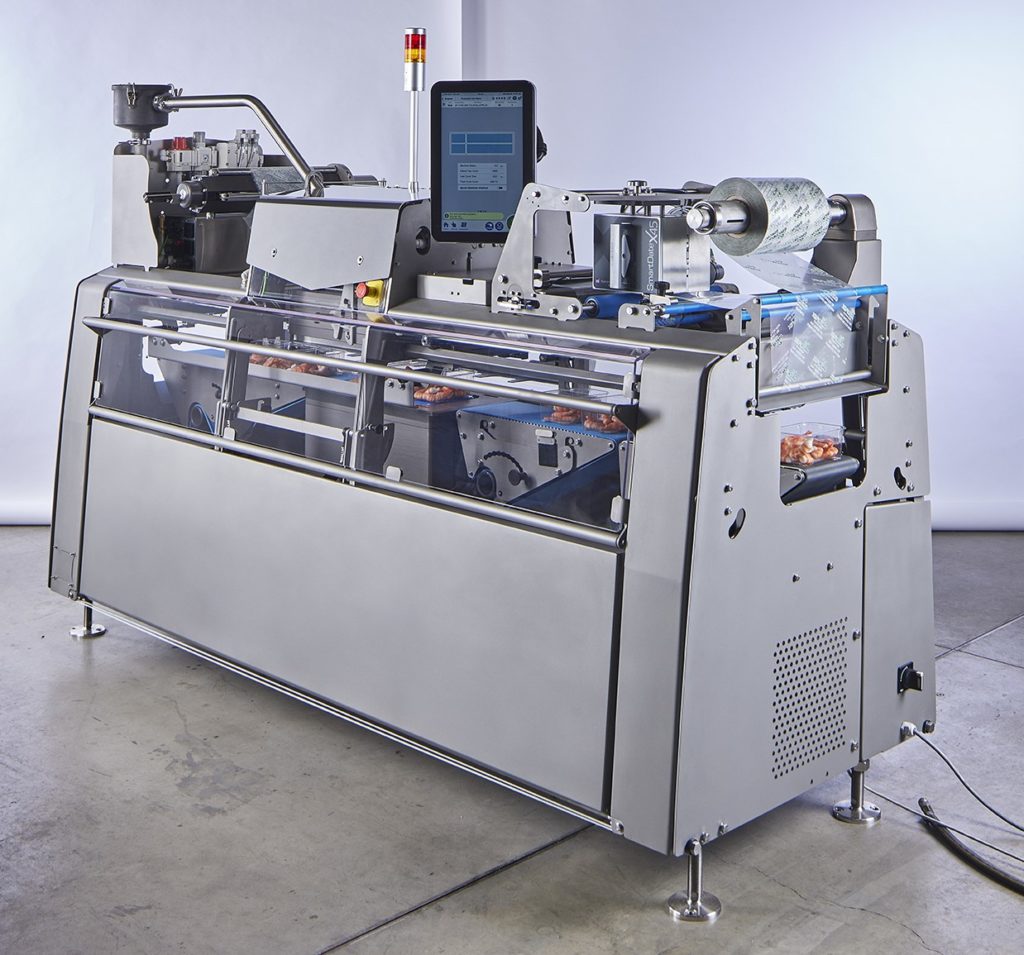 ISHIDA Europe is introducing a tray sealer that the manufacturer claims is ‘breaking new ground’ in terms of both performance and environmental benefits.
ISHIDA Europe is introducing a tray sealer that the manufacturer claims is ‘breaking new ground’ in terms of both performance and environmental benefits.
The new QX-500 has been developed following feedback from customers and partners. Ishida revealed this has resulted in the design of a compact solution that can fit into new and existing packing lines and combines ‘excellent’ seal quality and high throughput with helping companies to meet sustainability targets.
The machine is said to deliver a 66% increase in cycle speed, a 44% reduction in weight, a 46% reduction in size, and a 50% reduction in energy consumption.
A variety of sealing options are available – seal only, gas flushing, MAP, stretch film and skinpack – across different tray designs and materials, including plastic, board, and recyclable and paper film formats. Ishida added it is capable of up to 25 cycles per minute for seal only, and up to 17 cycles per minute for MAP, and is available with integrated film coding, gas mixing and integrated vacuum system.
“The global food market remains extremely competitive, and companies face many challenges on a daily basis,” said Tara O’Connor, Ishida Europe’s product manager for tray sealers. “By talking in depth with our customers and partners, we have been able to fully understand their tray sealing requirements.
“The QX500 is designed to maximise yields and throughput without compromising on product or pack quality and while minimising environmental impact.”
The model incorporates Ishida’s new ‘IntelliSeal’ system, which constantly measures the sealing force of the tray sealer to optimise sealing pressure, temperature and time for each cycle. Ishida explains this enables the QX-500 to adapt itself to each packaging format to ‘guarantee the highest pack quality, consistency and integrity’.
During the design stage, Ishida said each component was assessed to calculate its carbon footprint and, where appropriate, alternative materials selected to reduce environmental impact. The use of servo motor technology aims to minimise energy consumption and cost of operation, and the QX-500 monitors its power consumption during production to ensure it is running at the most energy efficient setting.
A further challenge identified in Ishida’s research was available factory space. An additional focus of the design was to drive down the size and weight of all major sub-systems of the tray sealer.
The manufacturer added that the creation of a full-size mock-up of the machine early in its development resulted in improved access within and around the product and improvements to the routing of services and the implementation of maintenance operations.
“Often development initiatives for products for an existing technology are based upon incremental improvements,” Tara O’Connor added. “The QX-500 represents a true clean sheet approach, with a development process that involved very high expectations and features enhancements across all aspects of the machine.
“This very broad development approach for both new technologies and machine construction means that we can truly state that the new QX-500 is revolutionary rather than evolutionary. All the new sub-systems come together to make something greater than the sum of its parts.”












